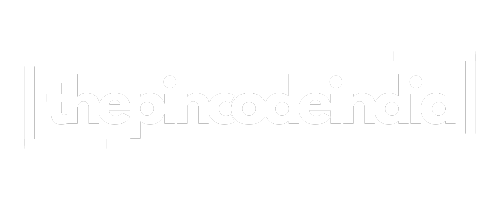The on-demand economy is booming in 2025, and delivery apps are leading the charge. From food and groceries to pharmacy and logistics, the demand for fast, reliable, and digital-first delivery services is at an all-time high. If you’ve ever thought about tapping into this market, now is the time to create your delivery app and take full control of your business model, brand, and customer experience.
From understanding the delivery app ecosystem to designing features, selecting the tech stack, calculating expenses, and launching your own solution, this thorough beginner’s guide will take you through every step of the process.
Why Create Your Delivery App?
Third-party platforms like Uber Eats, Talabat, and Instacart can give businesses access to large audiences, but at a cost. High commissions, limited customization, and a lack of direct customer engagement often restrict growth. By building your delivery app, you:
- Gain complete control over branding and user experience
- Eliminate middlemen and increase profit margins
- Own and access customer data
- Offer a seamless delivery ecosystem tailored to your audience
- Adapt quickly to evolving customer needs and market trends
Whether you’re a startup founder, restaurant owner, grocery chain, or logistics operator, a custom-built app can help you scale sustainably.
Step 1: Choose Your Delivery Business Model
Start by defining your app’s purpose and audience. Common delivery models include:
- Single Vendor Model – A business with its delivery fleet (e.g., a restaurant or pharmacy)
- Multi-Vendor Marketplace – Aggregates vendors and connects them with customers (e.g., Zomato, Talabat)
- On-Demand Logistics – Offers third-party delivery for any product or package (e.g., Lalamove, Dunzo)
- Hyperlocal Delivery – Serves customers in small geographic areas with fast turnarounds
Your business model will influence the app’s architecture, features, and complexity.
Step 2: Understand the Core App Components
To create your delivery app, you need to develop separate interfaces tailored to each user type:
1. Customer App
- Easy registration and login
- Product browsing and search
- Real-time order tracking
- Secure payments
- Ratings and reviews
- Notifications and order history
2. Delivery Agent App
- New order alerts
- Route optimization via GPS
- Delivery status updates
- Earnings dashboard
- Availability toggle
3. Vendor/Store Panel (for marketplaces)
- Menu or product management
- Order management
- Availability and pricing controls
- Sales reports
4. Admin Dashboard
- Order and user management
- Analytics and reporting
- Commission and payout handling
- Promo code and campaign setup
- Customer support tools
This modular structure helps streamline operations and deliver a smooth user experience across the board.
Step 3: Choose the Right Tech Stack
Your app’s performance, scalability, and user experience depend on the underlying technology. A modern tech stack may include:
- Frontend: Flutter, React Native (for cross-platform apps); Swift for iOS; Kotlin for Android
- Backend: Node.js, Django, or Laravel
- Database: PostgreSQL, MongoDB, or Firebase
- APIs & Services: Google Maps API (for tracking), Stripe or Razorpay (for payments), Twilio (for communication)
- Cloud Hosting: AWS, Google Cloud, or Azure
Selecting a scalable and secure stack is essential for handling growing user bases and transactions.
Step 4: Design an Intuitive UI/UX
A great delivery app is not just functional — it’s also visually appealing and easy to use. Focus on:
- Minimalist layout with simple navigation
- Quick checkout process
- Smart search and filtering options
- Clear CTAs (Call-to-Actions)
- Mobile-first design principles
Use wireframes and clickable prototypes to test user journeys before moving into development.
Step 5: Develop MVP and Test Rigorously
Your Minimum Viable Product (MVP) should include all core features necessary to serve customers and gather feedback. Agile development is ideal for this process, allowing for flexibility and quick iterations.
Make sure to perform:
- Functional testing
- Performance testing
- Security testing
- User acceptance testing (UAT)
A bug-free MVP helps create trust and ensures a smoother launch experience.
Step 6: Launch, Market, and Iterate
Once your app is ready, launch it on iOS and Android platforms. Build anticipation with a pre-launch campaign, then focus on post-launch growth strategies:
- Promote on social media and local directories
- Offer first-time user discounts
- Partner with local businesses for visibility
- Use referral programs to drive organic growth
Monitor user behavior, gather feedback, and plan future updates based on data-driven insights.
How Much Does It Cost to Create a Delivery App in 2025?
The cost to create your delivery app depends on factors such as:
- Number of platforms (iOS, Android, Web)
- Feature complexity and integrations
- Design and branding requirements
- Backend architecture and scalability
- Development team location and expertise
On average:
- Basic MVP: $20,000 to $40,000
- Mid-range multi-vendor app: $50,000 to $80,000
- High-end custom solution: $100,000+
You can reduce costs by partnering with an experienced app development company that provides reusable frameworks and ready-to-scale architecture.
Final Thoughts
Launching a custom delivery app is an efficient way to encourage customer loyalty, improve operational effectiveness, and raise revenues in today’s on-demand market. You can confidently go from concept to market and produce a digital asset that propels long-term growth if you have the correct people, strategy, and execution.
Launching a custom delivery app is one of the most strategic moves a business can make in today’s highly competitive, on-demand economy. Not only does it empower you to meet evolving consumer expectations for speed, convenience, and personalization, but it also strengthens your brand presence in the digital space. A well-built delivery app becomes more than just a tool—it becomes a powerful driver of customer retention, operational efficiency, and recurring revenue.


